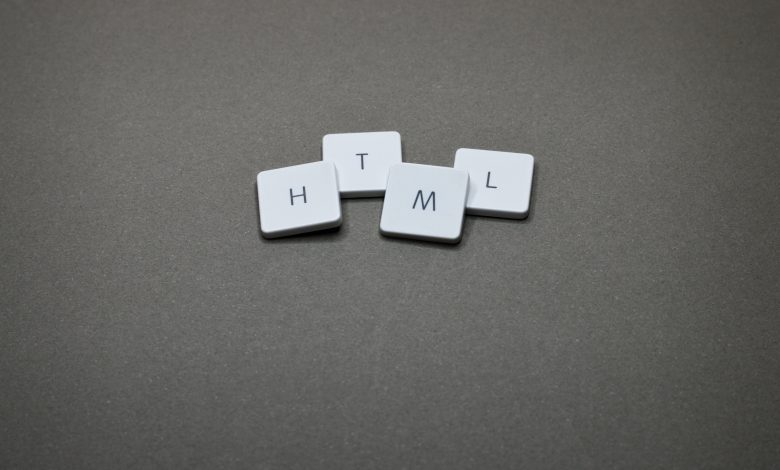Changing Text Color in HTML: A Comprehensive Guide for Beginners

Have you ever wondered how to make your website stand out from the crowd? Well, look no further! In this comprehensive guide, we will delve into the world of changing text color in HTML. Whether you’re a coding novice or have some experience under your belt, this article is designed to help beginners like you master the art of creating visually stunning web pages. So get ready to unleash your creativity and captivate your audience with eye-catching text colors that will leave them wanting more!
Why changing text color is important
Changing text color in HTML may seem like a small and insignificant detail, but it can actually have a significant impact on the overall aesthetics and user experience of a website. By carefully selecting the right text colors, web developers can enhance readability, create visual hierarchy, and evoke emotional responses from users.
One key reason why changing text color is important is that it improves readability. Using appropriate contrast between the background color and the text color ensures that the content is easily legible to all users, including those with visual impairments. Additionally, choosing high-contrast colors can prevent eye strain and make reading more comfortable for all visitors.
Another crucial aspect to consider is creating visual hierarchy through different text colors. By using different shades or hues for headings, subheadings, and body text, web designers can effectively guide users’ attention and emphasize important information. Brighter or bolder colors tend to catch the eye first while more subdued tones are less conspicuous but still play an essential role in maintaining coherence within the design.
Lastly, changing text color allows websites to evoke emotional responses from users. Colors have long been associated with certain emotions and symbolism. For example, warm colors like red or orange are often used to convey energy or urgency while cool blues are associated with calmness or trustworthiness. By strategically incorporating these connotations into their designs through careful selection of font colors, designers can subtly influence how visitors perceive their content.

Basic HTML syntax for changing text color
One of the most effective ways to make your webpages visually appealing is by changing the text color. Thankfully, with HTML, altering the color of your text is a straightforward process. To specify the color you want, you can use either a named color or its hexadecimal code. Named colors include commonly used ones like red, blue, and green. However, if you’re looking for more precise control over the exact shade of your text, using a hexadecimal code is recommended.
To change the text color in HTML, you’ll need to use CSS (Cascading Style Sheets) syntax. The simplest and most common way is by creating an inline style attribute within your HTML tag and assigning the desired color using the color property. For instance, if you want to change some text within a paragraph to blue: <p style=color: blue;>This is my blue text!</p>. This inline approach allows for quick styling changes without affecting other elements on your webpage.
Alternatively, instead of just specifying colors directly in each HTML tag, it’s often more efficient to define classes that can be reused across multiple elements. By placing your CSS styles into a separate file and linking it with your HTML document using the <link> tag in the <head> section, you create greater consistency throughout all pages on your website.
CSS properties for changing text color
One of the most fundamental ways to customize the appearance of text in HTML is by changing its color. CSS provides several properties that allow developers to experiment with different text colors and create unique visual experiences for their website visitors.
The most commonly used CSS property for changing text color is color. By specifying a hexadecimal value, RGB value, or color keyword, you can instantly transform the look of your text. But did you know that there are other CSS properties that can also affect text color? For example, background-color can be used to give your text a contrasting backdrop, making it more prominent and easier to read. And if you want to get really creative, try using text-shadow to add depth and visual interest to your text by applying a shadow effect.
In addition to these basic properties, there are advanced techniques that involve manipulating multiple CSS properties simultaneously. For instance, you can combine text-fill-color, which sets the fill color inside characters but does not apply an outline or stroke, with text-stroke, which adds an outline around each character, resulting in eye-catching effects like outlined black lettering on a colored background. With so many options at your disposal, the possibilities for creating visually striking and attention-grabbing text are virtually endless!

Using hexadecimal colors in HTML
Using hexadecimal colors in HTML is a powerful way to customize the appearance of your text. Instead of relying on the standard color names like red or blue, hexadecimal colors offer a wide range of options to choose from. These colors are represented by a combination of six characters, including numbers from 0-9 and letters A-F. By using hexadecimal colors, you have precise control over the shade and intensity of your text color.
One advantage of using hexadecimal colors is that it allows for more consistency across different browsers and devices. Unlike named colors, which don’t always render consistently across various platforms, hexadecimal values provide a standardized approach to specifying text color. This means that no matter what browser or device your audience is viewing your website on, they will see the same exact color you intended.
Another benefit of using hexadecimal colors is the ability to create unique and eye-catching text effects by leveraging transparency options. By adding an additional pair of characters at the beginning hex value (e.g., #FF0000 for red), you can adjust the opacity level and produce stunning gradient effects or give your text a ghost-like appearance.
In conclusion, utilizing hexadecimal colors in HTML gives web developers greater flexibility when it comes to customizing text appearances. The precision and consistency offered by these values ensure that your chosen color will be rendered accurately across multiple platforms. Additionally, exploring transparency options allows for creative experimentation with unique and captivating text effects.
Using named colors in HTML
Using named colors in HTML is a great way to enhance the visual appeal of your website. While hexadecimal color codes offer endless possibilities, named colors provide a more intuitive and user-friendly approach.
Named colors are pre-defined keywords that represent specific colors. For example, instead of using #0000FF for blue, you can simply use the keyword blue in your CSS code. This not only makes it easier to remember and type the color names but also allows for quicker and more efficient coding.
One advantage of using named colors is their consistency across different browsers and devices. Since these color names are standardized, you can be confident that they will render consistently on different platforms. Moreover, using named colors can make your code more readable for others who may need to work with or modify your website in the future.
While named colors provide a convenient solution, it’s important to note that they have limitations as well. They typically offer a smaller range of options compared to hexadecimal codes, which means you may need to compromise on getting exactly the desired shade or tone. However, if simplicity and ease-of-use are priorities for your project, then utilizing named colors in HTML is undoubtedly a smart choice. So go ahead and explore this often overlooked feature – you might just find yourself pleasantly surprised by its versatility!

Applying text color to specific elements
Applying text color to specific elements in HTML can add a touch of customization and personalization to your webpages. By targeting specific tags or classes with CSS, you have the power to transform the look and feel of your content. Whether you want to make headings stand out with a bold color or highlight important text within paragraphs, the possibilities are endless.
One clever way to utilize text color is by using it strategically in navigation menus. By giving different sections their own unique color, you can help users easily identify where they are on your website and improve overall usability. Additionally, consider playing around with gradients or transparent overlays on background images – this can create an eye-catching effect that instantly grabs attention.
It’s also worth noting that applying text color should be done thoughtfully and purposefully. It’s essential to maintain readability by ensuring there is enough contrast between the text and background colors for easy legibility. Remember that less is often more when it comes to design—using too many different colors can create an unbalanced visual experience for readers. With a little experimentation and creativity, however, applying text color to specific elements can truly take your HTML designs from ordinary to extraordinary.
Conclusion: Mastering the art of changing text color
To wrap up our comprehensive guide on changing text color in HTML, it’s important to remember that mastering this art is not just about knowing the technicalities; it’s about using color strategically to enhance the overall user experience. While it might be tempting to go overboard with vibrant colors, finding a balance and understanding the psychology behind different colors can make or break a design. So, take into account factors like readability, contrast, and accessibility when selecting your color palette.
In addition to understanding the technical aspects of changing text color, it’s crucial to keep up with current design trends and experiment with different styles. For example, the trend of using gradient text has gained popularity in recent years. By applying gradients creatively to your text elements, you can create eye-catching and dynamic effects that captivate your audience.
In conclusion, mastering the art of changing text color is an ongoing process that requires both technical knowledge and creativity. By considering factors like usability and aesthetics while staying open to new design trends, you can create visually appealing websites that engage users through compelling use of color. So experiment fearlessly and continue refining your skills – who knows what vibrant creations await!



